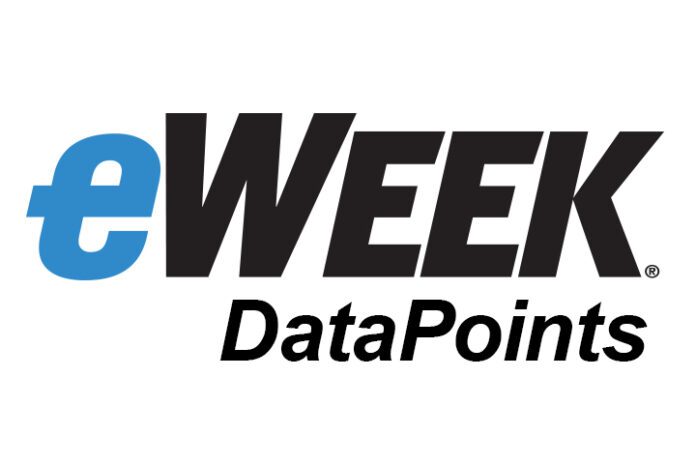The dreaded trend term “digital transformation” is a bit worn out at this point for those of us who talk and write about it on a daily basis, but it remains a top priority for many organizations. These companies are trying to automate capabilities as a lever for optimizing operations, delivering better service to customers and driving top-line growth. They’re also looking to deploy automation against increasingly complex business processes and scale the benefits of this transformation as widely as possible.
To move ahead with DT initiatives and achieve these outcomes, enterprises are looking for platform-automation capability that allows them to optimize end-to-end operations. Typically, these problems range from improving the way information is captured and extracted, to taking action on that information in downstream systems/applications, then facilitating checkpoints with people along the way, so that they can collaborate with automation.
Go here to see eWEEK’s listing of Top Predictive Analytics vendors.
This array of problems translates into–and cross-walks with–core intelligent automation IT cited below. These technologies drive significant value for an organization when bundled and well integrated into a platform that includes:
• Cognitive capture: Ingests/understands and extracts relevant information via any channel from any document;
• Process orchestration: Integrates people, automation technologies, systems, applications, etc. along a broader workflow in a business-user intuitive manner;
• Mobility and engagement: Engages customers efficiently and effectively via web or mobile devices;
• Advanced analytics: Provides data-driven insights with respect to outcomes as driven by automation; and
• Artificial intelligence: Automates complex decision making and personalizes service to end users.
Core platform technologies such as these can be extended by artificial intelligence to further enhance the degree to which data can be digitized, processed and delivered back to end users in a personalized fashion. Furthermore, the more embedded AI becomes within these core technologies (be it through innate integration or light connectors to vendors of AI products), the more effectively IT teams can scale the benefits of a platform while avoiding extra layers of work and complexity associated with having to manually develop custom integration.
This eWEEK Data Points article uses industry information from Kofax Chief Strategy Officer Chris Huff. Kofax claims that its software strengthens innate AI capabilities within its Intelligent Automation platform, especially as it relates to separating documents, classifying content within them, and extracting relevant text.
How to Implement an AI-Enhanced Intelligent Automation Platform
IT teams may find it daunting to deploy a platform against end-to-end business operations. But a five-step framework is available to guide them along the way and put structure to a corporate initiative around digital transformation with automation. Organizations can follow a phased approach to adopting automation, as defined below: starting with a maturity model assessment, maturing that into an implementation journey map, and finally standing up and operating an automation initiative based on the journey map established.
Data Point Step No. 1: Develop a Maturity Model Assessment
Evaluate automation readiness from a technology and process perspective. IT and business owners need to be involved. IT is required because they understand how automation technologies fit within the larger IT framework, of course. But business owners have the best grasp of which processes are fully optimized and are the best candidates for automation.
Data Point Step No. 2: Establish an Implementation Journey Map
As noted earlier, end-to-end automation depends on connecting the technology with the use cases. Thus, IT teams and business owners must properly rank candidates with an appreciation for what will yield the greatest returns early on. A platform approach should help organizations solve problems with automation. Typically, problems range from improving the way information is captured and extracted, to taking action on that information in downstream systems/applications, and also facilitating check-points with people along the way such that they can collaborate with automation. After taking steps to align with respect to use cases that drive ROI, along with platform technologies required to automate those use cases, an organization can transition into actually designing automation solutions within the platform.
Data Point Step No. 3: Create an Operating Model for an Automation Program
It’s important to create an operating model around automation that fits your organization. This can also be referred to as the Center of Excellence for Intelligent Automation. It represents a group of core resources and people that guide all things automation related, including maintaining and overseeing standards for automation across the business, training, management of vendors, establishing best practices and so much more. As adoption spreads and scaling takes place, certain responsibilities will likely need to be transferred and replicated across business units.
Data Point Step No. 4: Scale
From a technology perspective, the platform of choice can have a real impact on ability to scale as driven by things such as its architecture, user-intuitiveness, breadth of automation capabilities and the governance mechanisms it has in place.
Data Point Step No. 5: Innovate
The last step in true digital transformation is to always keep an eye on innovation. Successful organizations continually look for new technologies that can benefit the automation program. For IT teams charged with digital transformation of their organizations, a single platform with native AI will reduce cost, time to value and complexity, while also maximizing customer and employee satisfaction.
As a result, organizations can achieve end-to-end automation and begin to begin work like the digitally enabled business of the future today.
If you have a suggestion for an eWEEK Data Points article, email cpreimesberger@eweek.com.
